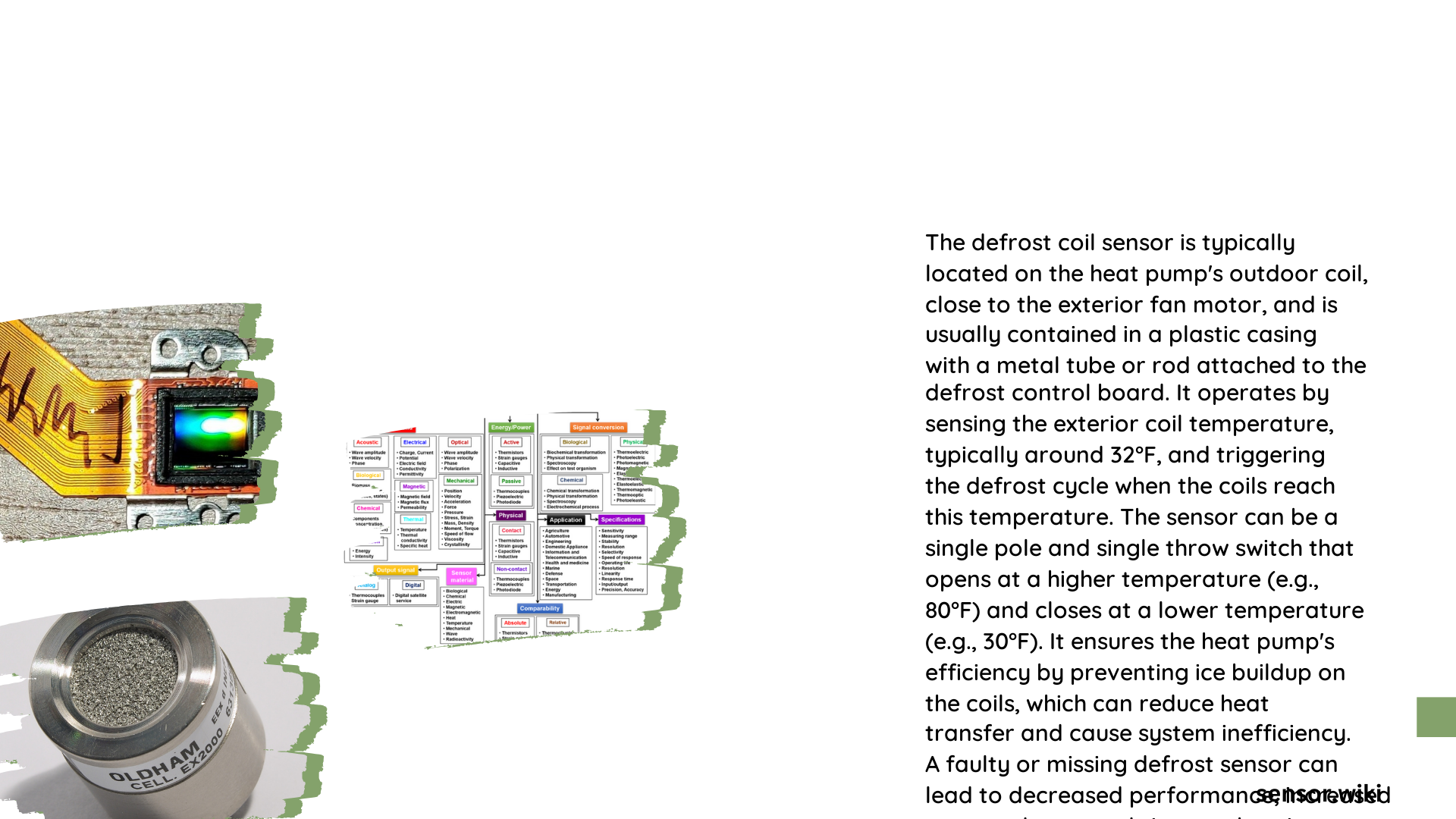Defrost coil sensors are critical components in HVAC systems, particularly in heat pumps and refrigeration units. These sensors monitor the temperature of the evaporator coil and trigger the defrost cycle when ice buildup is detected. Understanding their specifications, troubleshooting procedures, and maintenance is crucial for optimal system performance and energy efficiency.
What are the Key Specifications of Defrost Coil Sensors?
Defrost coil sensors are designed to operate in a wide temperature range, typically from -40°F to 248°F (-40°C to 120°C). They often use a 10K Ω thermistor, which changes resistance with temperature. These sensors are usually accurate to within 0.72°F (0.4°C) over their operating range.
Key specifications include:
- Temperature Range: -40°F to 248°F (-40°C to 120°C)
- Accuracy: ±0.72°F (±0.4°C)
- Resistance: 10K Ω at 25°C (77°F)
- Quick response time to temperature changes
How to Troubleshoot Defrost Coil Sensors?

Troubleshooting defrost coil sensors involves identifying common failure modes and using diagnostic tools to pinpoint issues. Here’s a step-by-step guide:
- Check for Short Circuit:
- Use a multimeter set to Ohms
-
If resistance is near zero, the sensor is likely shorted
-
Test for Open Circuit:
- Set multimeter to Ohms
-
If resistance is infinite, there’s an open circuit
-
Verify Resistance Values:
- Measure resistance at different temperatures
-
Compare with manufacturer specifications
-
Inspect Wiring and Connections:
- Look for damaged wires or loose connections
-
Check for corrosion at connection points
-
Measure Voltage:
- Set multimeter to DC volts
- Verify voltage at sensor connections (typically 5-6 volts DC)
What is the Process for Replacing a Defrost Coil Sensor?
Replacing a defrost coil sensor requires careful attention to compatibility and proper installation techniques. Follow these steps:
- Ensure Compatibility:
- Match the new sensor with your system specifications
-
Verify voltage and resistance ratings
-
Gather Tools:
- Screwdrivers
- Wire strippers
- Pliers
-
Multimeter
-
Installation Procedure:
- Disconnect power to the system
- Remove the old sensor
- Mount the new sensor securely
- Connect wiring to the defrost control board
-
Test the new sensor with a multimeter
-
Cost Considerations:
- Sensor prices range from $50 to $150
- Factor in labor costs if professional installation is required
How to Calibrate a Defrost Coil Sensor?
Proper calibration ensures accurate temperature readings and efficient defrost cycles. Here’s what you need to know:
Calibration Equipment:
- Thermocouple calibrator
- Ohm meter
Calibration Process:
- Verify Accuracy:
- Use a thermocouple calibrator to check sensor readings
-
Compare with known temperature points
-
Check Resistance:
- Measure resistance at various temperatures
-
Compare with manufacturer’s resistance-temperature curve
-
Adjust if Necessary:
- Some sensors allow for calibration adjustments
-
Follow manufacturer guidelines for adjustment procedures
-
Document Calibration:
- Record calibration date and results
- Plan for regular calibration checks (every 6-12 months)
What are Common Issues with Defrost Coil Sensors?
Understanding common problems can help in quick diagnosis and resolution:
- Sensor Drift:
- Gradual loss of accuracy over time
-
May cause unnecessary or delayed defrost cycles
-
Physical Damage:
- Cracked housing or damaged wires
-
Can lead to erratic readings or sensor failure
-
Incorrect Placement:
- Sensor not in optimal position on the coil
-
Results in inaccurate temperature readings
-
Contamination:
- Dirt or moisture affecting sensor performance
- Regular cleaning may be necessary
How to Optimize Defrost Coil Sensor Performance?
Maximizing the efficiency of your defrost coil sensor can lead to improved system performance and energy savings:
- Regular Inspections:
- Check sensor condition monthly
-
Look for signs of wear or damage
-
Clean Sensor Surface:
- Gently remove any debris or ice buildup
-
Use a soft brush or compressed air
-
Verify Mounting:
- Ensure sensor is securely attached to the coil
-
Check for proper thermal contact
-
Update Control Settings:
- Adjust defrost cycle parameters as needed
-
Consider seasonal changes in humidity and temperature
-
Monitor System Performance:
- Track defrost cycle frequency and duration
- Look for unusual patterns that may indicate sensor issues
By following these guidelines, HVAC professionals can ensure that defrost coil sensors are functioning optimally, leading to improved system efficiency and reliability.
References:
1. Copeland – Electronics Peripherals Catalog
2. Diagnosing a Heat Pump Defrost Sensor | ACHR News
3. Where is the heat pump defrost sensor, and how do I check it?
